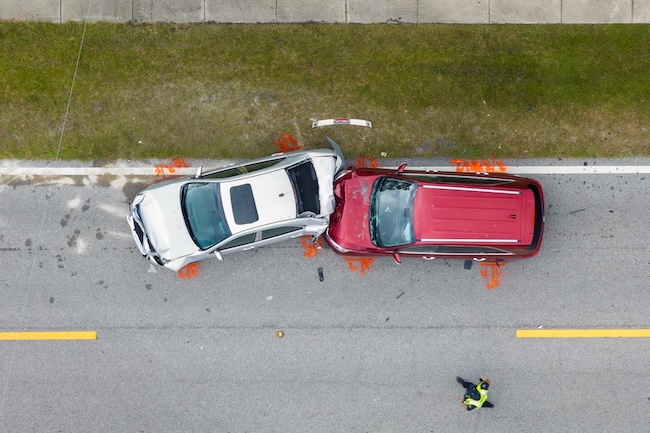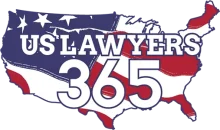Understanding Liability When Multiple Drivers Share Blame
After a car crash, determining who is at fault can be complex. In Illinois, the question of whether you can file a personal injury claim if you’re partially at fault often arises. If you’re in this situation, contacting a personal injury lawyer Illinois is an essential first step. With the state’s modified comparative negligence laws, accident victims still have rights even if they bear some responsibility for the accident.
What Does “Partially at Fault” Mean in Illinois?
Being “partially at fault” means that more than one party shares blame for the accident. In Illinois, this legal concept is evaluated under the state’s comparative negligence system, which is a legal doctrine that allows multiple parties to be held responsible based on their percentage of fault.
For example, if two drivers collide in an intersection and one failed to signal while the other ran a red light, both could be found partially liable. This is common in shared fault car accidents, especially in complex situations involving multiple vehicles, disputed right-of-way, lane changes, or traffic violations.
Partial fault can arise in many everyday scenarios such as rear-end collisions where the lead driver made a sudden stop without signaling, or in left-turn accidents where both drivers made judgment errors.
The law recognizes that accidents are rarely black and white. This framework ensures that drivers aren’t unfairly barred from seeking compensation due to minor contributions to the crash. Understanding how partial fault works is essential for navigating your personal injury claim and protecting your rights after a car crash.
The Modified Comparative Negligence Rule in Illinois
Illinois follows a modified comparative negligence system. If you’re found to be less than 51% at fault, you may still recover compensation. However, your compensation will be reduced in proportion to your share of the fault. This means if you’re 30% responsible, your damages are reduced by 30%.
How Fault Is Assigned After a Car Crash
Assigning fault involves a thorough analysis of various sources of evidence and information. Investigators and insurance adjusters will evaluate physical evidence from the accident scene such as vehicle positioning, skid marks, debris distribution, and damage patterns on each vehicle.
The police report plays a critical role, providing a third-party perspective that includes diagrams, officer observations, and any traffic citations issued. In many cases, the report will suggest which party the officer believes was at fault for the accident.
Witness statements are another essential component. These accounts can help clarify conflicting narratives, especially when the parties involved provide differing versions of how the accident occurred. Video footage, such as from traffic cameras or nearby businesses, can also provide objective evidence of events leading up to the crash.
Once all of this information is gathered, insurance adjusters from each driver’s insurance company analyze the evidence as part of the insurance company investigation process. They compare findings and may assign a percentage of fault to each party involved. This fault assignment affects the outcome of your personal injury claim and may also impact your insurance premiums.
In cases where the fault assigned is disputed or appears unfair, experienced car accident attorneys can present additional evidence or expert analysis to challenge the determination and help you seek fair compensation. Fault assigned can vary based on the facts available.
The Role of Insurance Companies in Determining Fault
Insurance companies play a significant role in determining fault. Each driver’s insurer will launch their own investigation and may assign fault differently. In cases where fault insurance companies disagree, the claims process may become more complex, requiring legal support from a car accident attorney.
Importance of the Police Report and Witness Statements
A police report provides an official account of the accident and can greatly influence the determination of fault. Witness statements help corroborate each party’s version of events. These elements are critical in a personal injury claim, especially when partial fault is involved.
Medical Reports and Visible Injuries
Medical reports and visible injuries support your claim and demonstrate the impact of the accident. Even if you are partially at fault, these documents help prove the extent of your injuries, medical expenses, and the necessity to seek compensation.
Impact of Partial Fault on Recovering Compensation
Being partially at fault does not automatically bar you from recovering compensation. You can still file a personal injury claim and potentially recover damages for medical bills, lost wages, and pain and suffering, provided your share of the blame is 50% or less.
Comparative Negligence vs. Contributory Negligence
Illinois does not follow the pure contributory negligence model, which would bar recovery if you were even 1% at fault. Instead, modified comparative negligence allows more flexibility for accident victims to pursue compensation despite partial fault.
Shared Fault in Vehicle Accidents
Shared fault car accidents are common in Illinois. When both drivers contribute to the accident, comparative fault comes into play. Whether it’s due to speeding, distracted driving, or a defective vehicle, the fault is often split between involved parties.
How an Experienced Lawyer Can Help
An experienced attorney understands Illinois comparative negligence laws and can help protect your rights. If you’re dealing with an insurance claims adjuster or other driver’s insurer, having legal support is crucial to navigate the legal process and achieve fair compensation.
Admitting Fault at the Accident Scene
You should never admit fault at the accident scene, even if you believe you may be partially at fault. Let the insurance company investigation process and your car accident lawyer determine liability. An apology or admission can be used against you during the claims process.
Understanding Insurance Coverage and Premium Increases
If you’re partially at fault, the at fault driver’s insurance company may still cover a portion of your damages. However, partial fault can lead to increased insurance premiums. Understanding your insurance coverage is essential in planning your next steps after an accident claim.
Role of Traffic Laws in Determining Fault
Violation of traffic laws is a key element in assigning fault. If one driver was speeding or failed to yield, they may bear greater fault for the accident. These violations are factored into the claims process and can shift liability.
Factors That Influence Fault Assignment
In addition to traffic laws, several other factors influence how fault is assigned in car accidents. Road conditions, such as weather-related hazards or poor signage, can shift responsibility. Driver behavior, like distractions due to mobile phone use, fatigue, or intoxication, is also evaluated. Vehicle conditions, including defective vehicle components or lack of maintenance, can contribute to an accident and affect how fault is divided.
Surveillance footage from nearby businesses or traffic cameras, as well as clean driving records or histories of violations, may also weigh into the decision. Insurance adjusters and legal professionals take all of these factors into account when determining fault and calculating potential liability.
How Insurance Adjusters Assign Fault
Insurance adjusters play a critical role in the insurance company investigation process. They assess the accident scene through photographs, vehicle damage, and physical evidence. They also review the police report, traffic citations, and any available medical reports.
Additionally, they conduct interviews with the involved parties and gather witness statements to reconstruct how the accident occurred. In shared fault car accidents, insurance adjusters will often negotiate with other driver’s insurance company to determine how fault should be divided. These assessments directly impact the outcome of your personal injury claim.
Experienced personal injury attorneys can review the findings and challenge any unfair conclusions by presenting additional evidence or expert testimony.
Pursuing a Personal Injury Case in Illinois
Filing a personal injury case when you’re partially at fault requires strong legal representation familiar with comparative negligence laws. Your car accident attorney will collect and present comprehensive evidence, including photographs, medical reports, and witness statements, to support your version of events. They also communicate with the driver’s insurance company and claims adjuster to advocate for fair compensation.
Navigating the legal process in modified comparative negligence states like Illinois can be complicated, especially when fault is contested. A knowledgeable car accident lawyer ensures that your accident claim is thoroughly evaluated and your rights are protected throughout the claims process.
The Importance of Physical Evidence
Photographs, dashcam footage, and vehicle damage assessments are vital forms of physical evidence in a personal injury claim. Images from the accident scene can capture road conditions, traffic signals, skid marks, and visible injuries.
Dashcam video can reveal how the accident occurred, which is crucial when determining fault in shared fault car accidents. Additionally, mechanics’ assessments and repair invoices can indicate the angle and severity of the collision, providing further support for your case.
Even if you are partially at fault, presenting strong physical evidence can influence the driver’s insurer and insurance adjusters during the evaluation of your claim. It also helps your car accident lawyer build a stronger argument for why you should still recover compensation.
Challenges Accident Victims Face When Partially at Fault
Accident victims who are partially at fault often face unique challenges in the claims process. Insurance adjusters may attempt to downplay the severity of your injuries or overstate your contribution to the accident in order to minimize payouts. Victims may also hesitate to pursue compensation out of fear that their partial fault disqualifies them.
Navigating conflicting narratives from the other party, dealing with medical expenses, and managing emotional stress from the car crash can all be overwhelming. These issues are compounded when trying to communicate effectively with the other driver’s insurer or a claims adjuster. That’s why working with an experienced personal injury lawyer Illinois residents trust is critical to overcoming these hurdles and maximizing your compensation.
Free Consultation With a Personal Injury Lawyer Illinois
Illinois Lawyers 365 offers a free consultation to evaluate your case. Whether you were involved in an auto accident, car wreck, or other vehicle accidents, our personal injury attorneys are here to help you seek compensation and recover damages. Don’t let partial fault stop you from pursuing the compensation you deserve.
You Can Still Seek Justice Even if You Share Fault
If you’re partially at fault in a car crash in Illinois, you still have the right to file a personal injury claim. The state’s modified comparative negligence laws are designed to ensure fair outcomes for all parties involved.
Don’t navigate the insurance claims process or legal system alone. Contact Illinois Lawyers 365 today 800-800-8000 for a free consultation with an experienced lawyer. We can help you understand your rights, navigate the legal process, and pursue compensation for your medical expenses, lost wages, and more. Let our personal injury attorneys fight for the justice you deserve.








